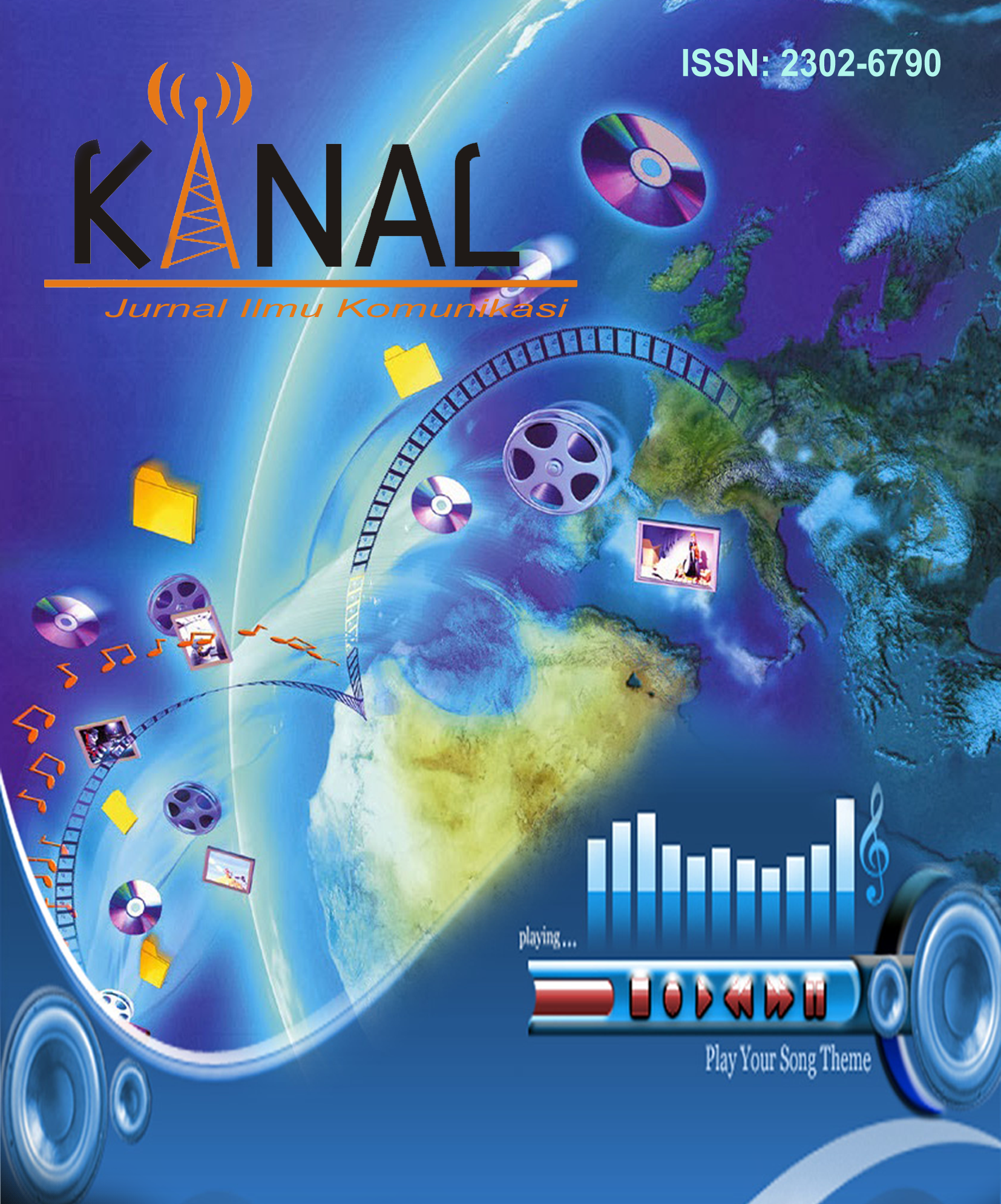Pelestarian Budaya Campursari dalam Program TVRI Jawa Timur
Preservation of Campursari Culture in the East Java TVRI Program
DOI:
https://doi.org/10.21070/kanal.v6i2.2563Keywords:
Television Media, Culture, CampursariAbstract
The purpose of this study is to find out the programing undertaken by TVRI East Java in preserving the campursari culture. To uncover these goals thoroughly and profoundly, this study used descriptive method and usedquantitative method. Based on the problem, the data collection technique that used by the researcher were interview, direct observation and documentation conducted by researcher at the site. Then, the data was analyzing critically on the basis of Morissan thinking, so it obtained deep meaning about that used by TVRI East Java in preserving campursari culture. Based on the result of this study, it found the programming strategy in TVRI East Jawa in preserving campursari culture that is in the form of planning strategy where TVRI East Java did the determination of ideas before the show of campursari aired and bumper selection that change every year, a production strategy whereby TVRI East Java has own self produced campurasri event as well as arranging the best possible crack of business, evacuation strategy of the program where TVRI East Java showed live campursari program in studio 1 who filled by campursari communities from various regions. Then, evaluation strategy where in each year would evaluate the programs so, campursari can be accepted by public.
References
Umar. (2002). Metode Riset Komunikasi Organisasi (hal.30). Jakarta: Gramedia
Morissan, M. A. (2011). Manajemen Media Penyiaran “Strategi Mengelola Radio dan Televisi” (hal. 273). Jakarta: Kencana Prenada Media Group.
Nawawi, H. (1998). Dalam Metode Bidang Penelitian Bidang Sosial (hal. 31). Yogyakarta: Gajah mada univerrity press.
Syakur, R. A. (2005, july 26). kompasiana. Dipetik 05 28, 2017, dari www.kompasiana.com
Koentjaraningrat. (1986). Dalam Koentjaraningrat, Pengantar Ilmu Antropologi (hal. 144). Jakarta: Aksara baru.
Kuswandi, W. (1996). Komunikasi Massa Sebuah Analisis Media Televisi. Jakarta: PT.Rineka Cipta.
McQuail, D. (2011). Teori Komunikasi Massa. Dalam D. McQuail, Teori Komunikasi Massa (hal. 103). Jakarta: Salemba Humanika.
Moleong, L. J. (2002). Dalam Metode Penelitian Kualitatif (hal. 160). Bandung: Remaja.
Suprapto, T. (2009). Pengantar Teori dan Manajemen Komunikasi. (hal. 25-26). Yogyakarta: MedPress.






